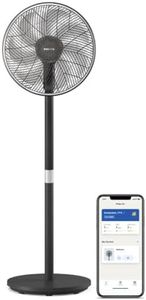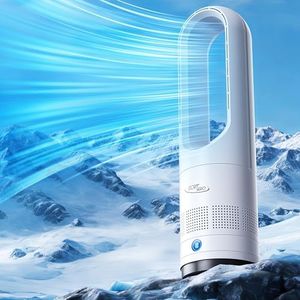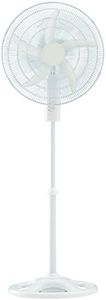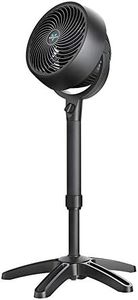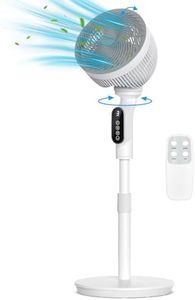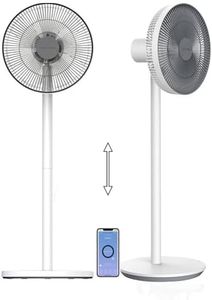We Use CookiesWe use cookies to enhance the security, performance,
functionality and for analytical and promotional activities. By continuing to browse this site you
are agreeing to our privacy policy
10 Best Standing Fans
From leading brands and best sellers available on the web.By clicking on a link to a third party's website, log data is shared with that third party.
Buying Guide for the Best Standing Fans
Standing fans are a popular choice for cooling indoor spaces because they're portable, adjustable in height, and easy to set up without installation. When choosing the best standing fan for your needs, focus on the most important features that impact comfort, convenience, and durability. Each household or room has slightly different needs, so think about where and how you'll use the fan before you buy.Fan Size (Blade Diameter)Fan size, usually measured by the diameter of the blades, determines how much air the fan can move. Larger fans (around 16 inches or more) are ideal for bigger rooms since they push more air and can cool a wider area. Medium fans (12-14 inches) are well-suited for mid-sized rooms or personal use, and smaller fans (10 inches or less) work best for small spaces and close-range cooling. Consider the size of the room and how many people you want to keep cool when making your choice.
Speed SettingsFan speed settings let you control how much air flows from the fan. Most standing fans offer at least three speeds—low, medium, and high. Some may have more options for more fine-tuned control. More speed settings mean you can better adjust the airflow for your comfort level and changing needs, like a gentle breeze at night or strong cooling on a hot day. Choose a fan with enough speed options to fit your usual comfort needs.
OscillationOscillation means the fan can move from side to side, spreading airflow over a wider area. This is great for evenly cooling a room or for sharing the fan's breeze among several people. Most standing fans oscillate in a wide arc, but some have adjustable angles. If you want to cool an entire room or multiple people at once, ensure your fan oscillates and, if possible, can be stopped at a set angle.
Height AdjustabilityHeight adjustability refers to the ability to change how tall the fan stands. This lets you direct airflow at different parts of the room or at a specific height, like towards a bed or a desk. Fans with a bigger range of height adjustment are more versatile. Think about where you'll place the fan and whether you’ll need to raise or lower it for best results.
Noise LevelNoise level matters if you'll use your fan while sleeping, working, or watching TV. Some fans run more quietly than others, especially on lower settings. If you’re sensitive to noise, look for standing fans that promise 'quiet' or 'silent' operation, or check the noise level in decibels if available. For bedrooms or offices, quieter fans are usually more comfortable.
Control FeaturesControl features include how you operate the fan—such as buttons, dials, remote controls, or even app connectivity. A remote control adds a lot of convenience if you want to adjust the fan from a distance, especially when resting. Some fans have built-in timers or sleep modes for automatic shut-off. Think about your preferred way to interact with the fan, and choose options that match your lifestyle.
Build Quality and StabilityBuild quality refers to the materials and construction of the fan. A stable base and strong pole will keep the fan steady, which is especially important if you have pets or children around. Fans made of sturdy plastic or metal last longer and are less likely to tip over. Consider your household and whether you need an especially robust and stable fan.
Ease of Assembly and CleaningMost standing fans require some assembly, and the fan blades gather dust over time. Models that are easy to put together and come apart for cleaning save you hassle. Simple designs without too many nooks and crannies are easiest to maintain. If you want a low-maintenance fan, look for those with tool-free assembly and easily removable grills.



